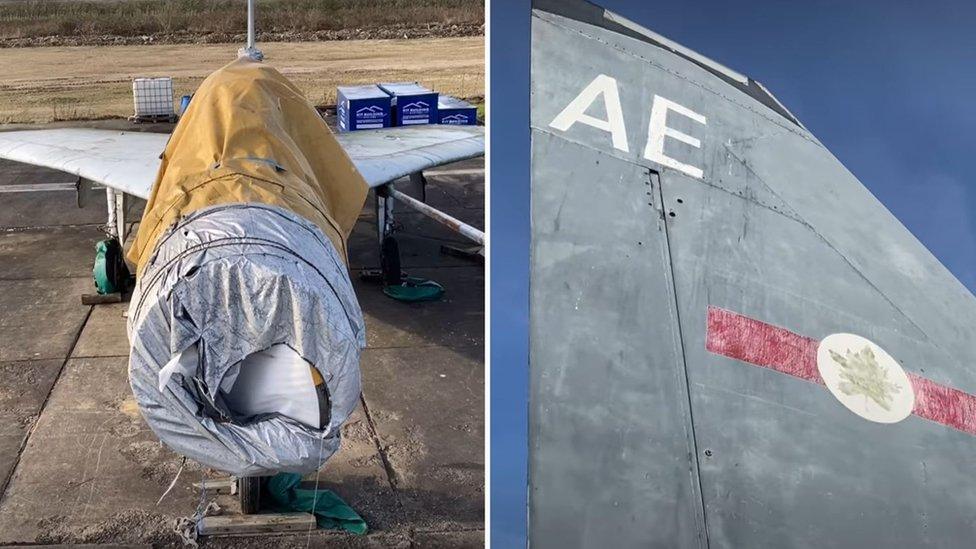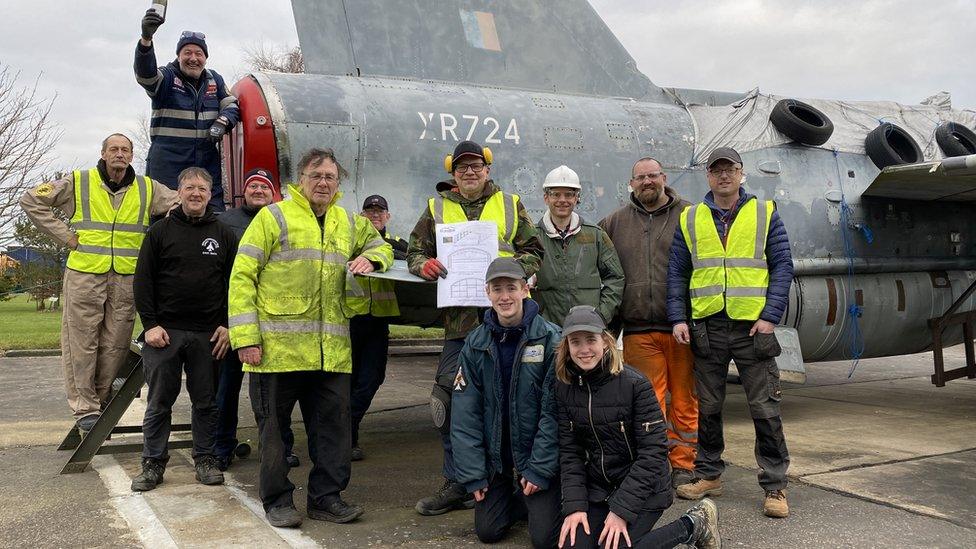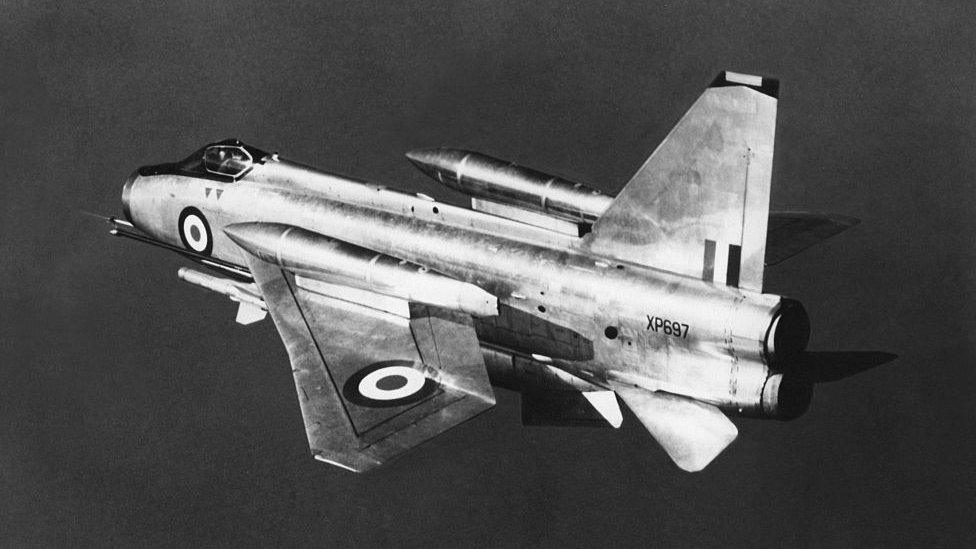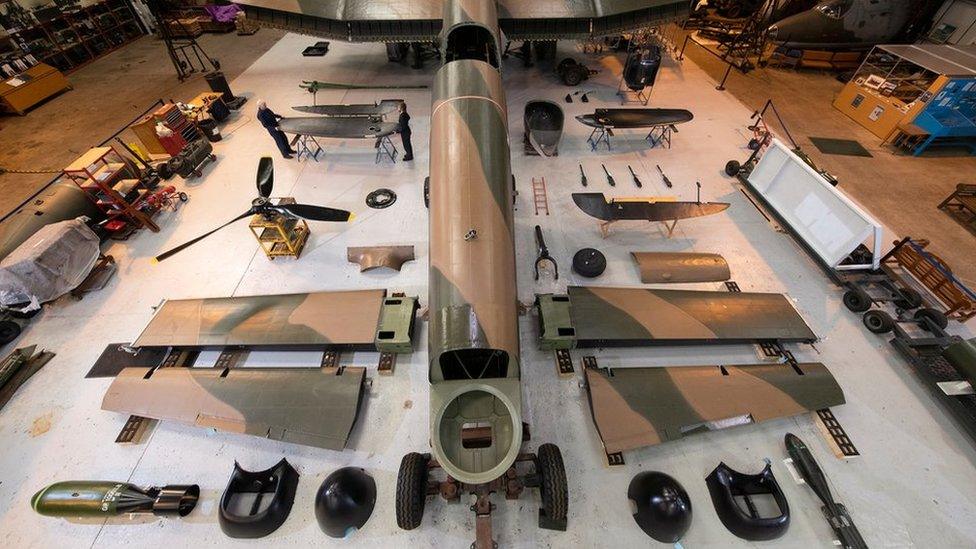Binbrook Lightning jet's future secure after hangar bid success
- Published

Lightning XR724 "flew home" to the former RAF Binbrook in 1992 and has been outside since, volunteers say
The future of a Cold War jet which has been exposed to the elements for decades has been secured after volunteers won planning permission for a hangar where it can be restored.
The Lightning Association, based at Lincolnshire's former RAF Binbrook, said it had been outside for 30 years.
Steve Baker, from the group, said the hangar would ensure the long-term preservation of Lightning XR724.
Future plans included repainting the aircraft and open days, he said.
The application for a temporary hangar to house the English Electric jet has been given the go-ahead by West Lindsey District Council.

The Lightning Association, based at the former RAF Binbrook, celebrate securing planning permission
In a Facebook post celebrating the decision, the group wrote: "For the first time since she flew home in 1992, she will have a roof over her head with no threat of eviction."
Mr Baker thanked everyone who had donated to the project and said he was delighted with the outcome.
"It's been outside exposed to the elements for 30 years, which has taken a toll on the paintwork," he said.

The hangar means work on restoring the Lightning will finally be able to take place indoors
In the long term, Mr Baker said the aircraft would be repainted in its official colours, with plans to get the engines running again.
"Then we will be looking at having open days where people can come round and have a good look at the aircraft," he added.
The cost of the hangar will be funded through donations, according to the Lightning Association

English Electric Lightning

The Lightning was developed to bring the RAF into the supersonic age, serving from the 1960s into the late 1980s
It was able to fly at twice the speed of sound and was hailed as an incredible leap forward in performance and technology
It had such a power to weight ratio that it could stand on its tail and exceed the speed of sound in a vertical climb
Source: Imperial War Museum

Follow BBC East Yorkshire and Lincolnshire on Facebook, external, Twitter, external, and Instagram, external. Send your story ideas to yorkslincs.news@bbc.co.uk, external.
- Published5 January 2022

- Published17 August 2022

- Published27 September 2022

- Published19 February 2021
